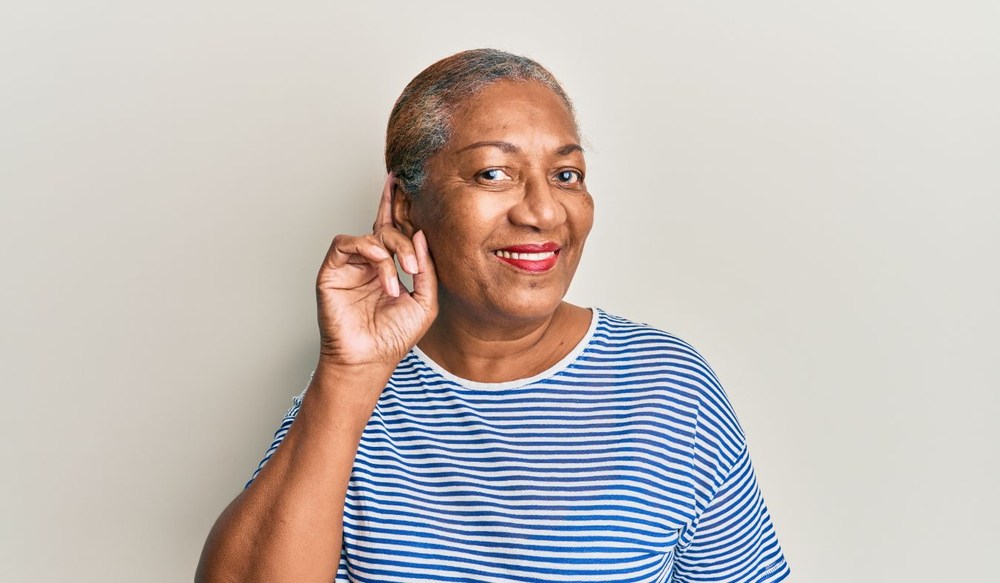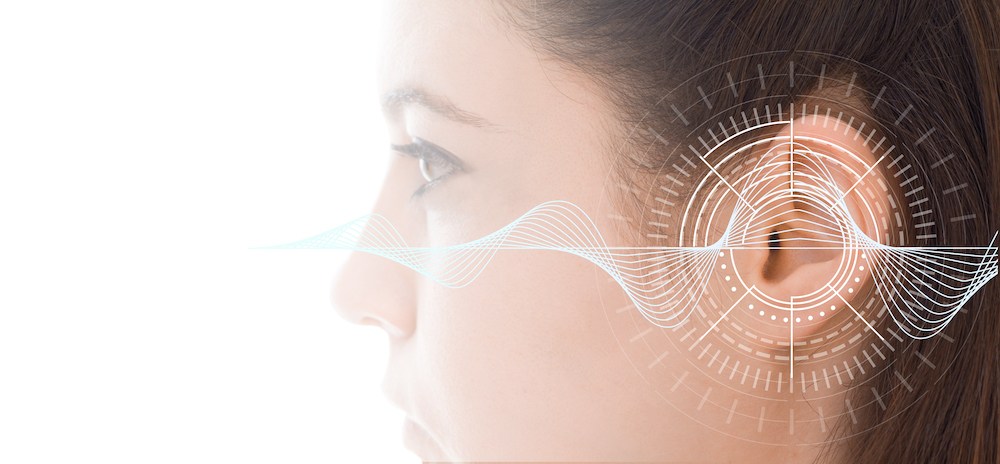How to Create a Hearing-Friendly Home Environment
Creating a hearing-friendly home starts with recognizing how much your

By: admin | April 24, 2025
Spring brings sunshine, warmer temperatures and a calendar filled with outdoor events that many of us look forward to all winter. Music festivals, concerts, sporting events and community celebrations offer fun and excitement, but they often come with noise levels that can potentially harm your hearing. What many people don’t realize is that even temporary exposure to loud sounds at these gatherings can contribute to permanent hearing damage over time.
Your ability to hear clearly affects nearly every aspect of daily life – from casual conversations with friends to important work meetings and your overall sense of safety. Taking simple precautions during spring festivals and other noisy events helps you enjoy these experiences while keeping your hearing healthy for years to come. The good news is that protecting your ears doesn’t mean missing out on the fun – it just means being smart about how you participate in these springtime activities.
Noise exposure, especially at high decibel levels, can significantly impact your hearing health. It’s more than the immediate ringing in your ears after leaving a loud event. Extended exposure to loud sounds can result in noise-induced hearing loss, which usually develops gradually and unnoticed until it becomes severe.
What does this imply? Sound is measured in units termed decibels (dB). A typical conversation usually measures around 60 dBs. In contrast, music at festivals can reach up to 120 dBs, equivalent to an ambulance siren’s sound! At these levels, constant exposure for more than 15 minutes without suitable ear protection could potentially damage the delicate structures within your ears responsible for transmitting sound signals to your brain.
It’s important to realize that damage from noise exposure accumulates over time. Every loud concert or festival adds up, and over years of repeated exposure, this can result in permanent hearing loss. The good news? This type of hearing loss can be prevented with awareness and proactive steps like wearing ear protection during noisy events.
To better protect your hearing, it’s beneficial to understand the importance of decibels. In simple terms, a decibel is a unit used to measure the intensity or loudness of sound. The higher the decibel count, the louder and potentially more harmful the noise can be.
How does this translate to real-world scenarios? Here’s a quick comparison. The soft hum of a refrigerator is about 40 dB, normal conversation falls around 60 dB and busy traffic can hit around 70-80 dB. Moving up the scale, a lawnmower might generate around 90 dB of noise, and the rock concerts or festivals you love? They can blast sound at a staggering 120 dB!
Why is this important? Continuous exposure to noise above 85 dB can cause damage over time. Activities like mowing your lawn or attending loud events without proper ear protection could put you at risk for noise-induced hearing loss.
Understanding decibels helps us make sense of our noisy world and make informed choices about protecting our ears. So next time you head out to a concert or festival, be mindful – every decibel counts!
Music festivals are filled with sound and energy, often cranking up the volume to levels that could potentially harm your hearing health. Spotting risky noise levels at music festivals can be made easier with a decibel meter app on your smartphone. These apps provide real-time readings of your immediate environment’s noise level. If you find yourself in an area where the noise level consistently exceeds 85 dB – equivalent to heavy city traffic – it’s time to either move away or put on some ear protection.
However, you may not always have an app available to you, so it’s essential to be able to identify additional signs of high noise levels. Other signs that the noise might be at a damaging volume include: having to shout over the music for someone standing three feet away from you to hear, experiencing ringing or buzzing in your ears during or after exposure or noticing muffled sounds after leaving the noisy area.
Extended exposure to loud noise can drastically affect your hearing health. One of the potential issues is noise-induced hearing loss, which often builds up slowly over time. You might start noticing difficulty in understanding conversations, especially in noisy environments or when multiple people are talking simultaneously. This can make social gatherings and public events less enjoyable and more stressful.
Another potential issue from long-term loud noise exposure is hyperacusis, a situation where ordinary sounds seem uncomfortably loud, complicating everyday life. Sounds like the hum of a refrigerator or the rustle of paper could become bothersome, creating an uncomfortable sensory experience. Fortunately, these can be prevented with the right hearing protection and by taking precautions when immersed in these loud levels.
Temporary threshold shifts (TTS) refer to a temporary decrease in hearing sensitivity following exposure to loud sounds. In the context of music festivals, it’s the muffled hearing or ringing in your ears you might experience after spending hours immersed in loud music.
The hair cells in your inner ear, responsible for transmitting sound signals to your brain, can become overworked and less responsive when exposed to high decibel sounds for extended periods. This results in a temporary dip in your ability to hear softer sounds. However, with adequate rest and time away from loud noises, these hair cells usually recover, and normal hearing resumes.
Repeated instances of TTS can potentially lead to more permanent changes over time. It’s akin to running a marathon without proper training – doing it once might leave you sore and tired but consistently pushing beyond your limit could result in long-term damage.
If you’re heading to a concert, outdoor festival or any loud event, protecting your hearing should be just as much a priority as packing sunscreen or staying hydrated. Prolonged exposure to high volume levels can do lasting damage, especially when you’re near speakers or in dense crowds. Fortunately, there are a range of hearing protection options that let you enjoy the experience without sacrificing your long-term hearing health. Earplugs are one of the most accessible tools – foam versions are easy to find and inexpensive, while high-fidelity or musician’s earplugs offer a more refined solution by lowering volume without distorting the sound.
High-fidelity earplugs are ideal for music lovers who want to keep the live experience intact but safer. These plugs are designed to reduce noise evenly across all frequencies, meaning you still hear the music clearly – just at a safer volume. They’re reusable, usually more comfortable than disposable ones and often come with cases for easy storage during travel. Custom-molded earplugs are another step up, offering a personalized fit created from a mold of your ear. They provide both comfort and excellent sound clarity, especially useful for those who attend events regularly or have specific hearing concerns.
For people who aren’t fans of plugs, noise-reducing earmuffs or noise-canceling headphones are strong alternatives. Though bulkier, they offer effective protection and may be more comfortable for extended wear. Some headphones even allow ambient sounds through at a lower, safer level – great for maintaining awareness without the risk. The key is choosing something that fits your preferences, comfort and listening habits. Whether it’s a disposable foam plug for a one-time show or a custom solution for ongoing protection, the right ear protection can make sure your favorite festivals remain part of your plans for years to come.
With some simple strategies in place, you can enjoy your favorite festivals without compromising your hearing health. Firstly, always keep those earplugs or earmuffs handy. They should be as essential as your festival ticket! Wearing them consistently throughout the event is key to protecting your ears from high decibel levels. Secondly, give yourself regular ‘quiet breaks’. Step away from the loudspeakers or find a quieter spot to let your ears rest for a while. These breaks can help prevent temporary threshold shifts that could potentially lead to long-term damage if ignored.
Finally, monitor how loud you’re listening to music on personal devices like headphones or earbuds before and after the festival. Your ears might be more sensitive during this time due to increased noise exposure at the event. Lowering volume levels will go a long way in maintaining good hearing health.
Just as your body needs rest after a long day of dancing and partying at a festival, so do your ears. Spotting the signs of overexposure to noise is key in knowing when it’s time to give your ears some downtime. These signs can range from a feeling of fullness or pressure in your ears, to muffled hearing or ringing sounds. These symptoms may be temporary and fade away after a few hours of quiet. However, they are clear indicators that you’ve exposed your ears to more noise than they can handle. It’s essential not to ignore these warning signs – continuing exposure could lead to more permanent damage.
Taking care of your hearing health doesn’t mean missing out on the fun! With smart strategies like using ear protection, taking regular quiet breaks and paying attention to overexposure warning signs, you can enjoy all the music festivals have to offer while keeping your hearing safe.
If you’ve been to a loud event – like a concert, sports game or fireworks show – and notice ringing in your ears or a sudden change in how well you hear, it’s a good idea to pay attention. While it’s common for mild tinnitus or muffled hearing to show up after loud noise exposure, these symptoms should fade within a day or two. If they don’t, or if they come back repeatedly, that’s a sign it’s time to see an audiologist. Lingering symptoms might indicate more permanent damage to your hearing, and early evaluation gives you the best chance to understand what’s happening and take steps to prevent further harm.
It’s also wise to schedule a visit if you notice gradual changes – like needing the TV louder than usual, struggling to follow conversations in restaurants or feeling like people are mumbling more often. These signs can develop slowly after repeated noise exposure, making them easy to overlook until they begin to affect your day-to-day life. An audiologist can perform a hearing evaluation, help identify the cause and guide you toward solutions – whether that means hearing protection strategies, sound therapy for tinnitus or personalized hearing support. The sooner you act, the more options you’ll have to protect what you’ve got.
As you make plans for the months ahead, it’s worth taking a moment to think about how you’ll protect your hearing along the way. From choosing the right type of ear protection to paying attention to signs of overexposure, the small decisions you make now can have a lasting impact. Whether you’re heading to a concert, cheering on your favorite team or just enjoying the buzz of a busy outdoor market, your hearing deserves the same care and attention as any other part of your health. You don’t need to give up the things you enjoy – just go into them prepared.
If you’ve noticed that your ears ring after a noisy event or that conversations feel a little harder to follow lately, it’s a good time to check in with an audiologist. At Macomb Audiology & Hearing Aid Center in Macomb, IL, we’re here to support you. You can reach us at (309) 731-4296 if you have questions, want a hearing check or just need guidance on how to protect your ears better this season.
Tags: hearing loss prevention tips, hearing protection services

Creating a hearing-friendly home starts with recognizing how much your
By: admin | November 18, 2025

Tinnitus is something many people experience at some point, where you hear
By: admin | August 21, 2025

Spring brings sunshine, warmer temperatures and a calendar filled with
By: admin | April 24, 2025